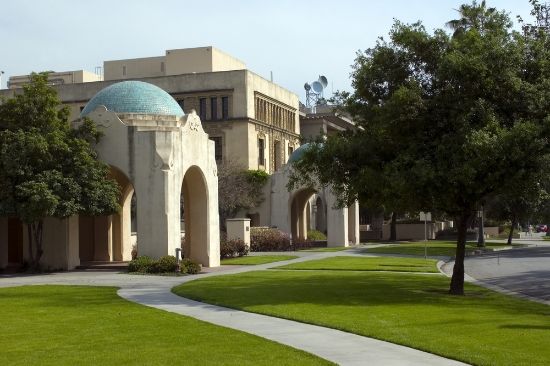Discover Your College Fit: A Step-by-Step Guide to Finding the Right University for You
Read now/f/64062/816x460/2b8246a4c6/columbia-campus.jpg)
/f/64062/550x356/c0fa9730b4/mit-2.jpg)
But what if I told you that not all STEM educations are created equal? And that where you study could be the difference between whether you make less than minimum wage or make over $100,000 USD a year?
Yep, where you go to university actually matters.
It's no coincidence that the top STEM universities have the highest graduation rates, the highest employability scores and the most money to spend on your education.
Going to the top universities also gives you a huge competitive advantage!
As more students start to realise the benefits of a STEM education, the more competitive the job market will become.
So how do you stand out among a crowd of insanely smart (and slightly nerdy) students?
By picking a college that will not only give you a great education but that’ll also help get your foot in the door at the top companies around the world!
What more could you want?
They may contribute to the same acronym, but each STEM field is its own ball game, so I've listed the top unis for each subject category, and ended with an overall winner!
The optimist sees the glass half full. The pessimist sees the glass half empty. The chemist sees the glass completely full; half with liquid and half with air.

If you’re interested in getting a PhD in your respective field and working in a lab or as a professor, Caltech is the school for you.
Forget Google!
Researching and teaching in the field you love can be much more rewarding than sitting at a computer all day!
But, before you can get your PhD, you have to find your passion.
Luckily, Caltech offers a plethora of undergraduate research opportunities to help you do just that. In fact, over 85% of applicants participate in a Summer Undergraduate Research Fellowship (SURF).
Who needs the ocean when you can SURF in a lab?
Jokes. Hopefully you'll have some time to actually hit the beach during your summer holiday, whether you're completing a SURF or not.
P.S. If you’re interested in space, Caltech is the place to be. The uni manages NASA’s Jet Propulsion Laboratory (JPL)!
Acceptance Rate: 8%
Average SAT Score: 1560
Average ACT Score: 34-35
Undergraduate Population: 979
Percent of International Students: 9%
Overall Ranking (QS): #4
Subject Ranking: #7 in Biological Science, #9 in Chemistry, #16 in Material Sciences, #115 in Life Science & Medicine, #8 in Natural Sciences
Total Cost of Attendance (without financial aid): $68,901 USD a year
To find out your chances of gaining admission try our US College Admissions Calculator.

At Harvard, you can concentrate (Harvard slang for “major”) in almost every science subject under the sun and regardless of which you choose, they will all be outstanding.
In Harvard’s Chemistry and Chemical Biology department alone there are five Nobel laureates among the 36 professors. That means that almost 14% of your professors won the Nobel Prize.
Talk about learning from the best of the best.
On top of your incredible teachers, you’ll also have access to world class labs and research facilities including:
If you know what any of those labs actually do, you’re bound to get into Harvard!
Just kidding. You’ll need a lot more than just basic lab knowledge to get accepted.
Sorry.
However, if you do get into Harvard, you’ll receive one of the best STEM educations in the entire world!
Acceptance Rate: 5.2%
Average SAT Score: 1530
Average ACT Score: 34
Undergraduate Population: 6,700
Percent of International Students: 11.3%
Overall Ranking (QS): #3
Subject Ranking: #1 in Biological Science, #5 in Chemistry, #5 in Material Sciences, #1 in Life Science & Medicine, #3 in Natural Sciences
Total Cost of Attendance (without financial aid): $51,170 USD a year
Crimson Students are 4x more likely to gain admission to Ivy League universities such as Harvard.
To find out your chances of gaining admission try our US College Admissions Calculator.

As the US’ first research university, Hopkins has a lot going for it.
Although is mostly known for its great medical school, its undergraduate program is also fantastic.
During your undergraduate years you can take full advantage of the medical school by attending special lectures featuring the brightest minds and scoping out research opportunities to help solve the world’s most pressing medical problems.
If medicine is calling your name, Hopkins is your game.
Acceptance Rate: 13%
Average SAT Score: 1460
Average ACT Score: 33
Undergraduate Population: 6,117
Percent of International Students: N/A
Overall Ranking (QS): #17
Subject Ranking: #22 in Biological Science, #51-100 in Chemistry, #51-100 in Material Sciences, #6 in Life Science & Medicine, #78 in Natural Sciences
Total Cost of Attendance (without financial aid): $51,170 USD a year
To find out your chances of gaining admission try our US College Admissions Calculator.
Harvard, duh.
Why do Java developers wear glasses? Because they can't C#

What do Google, Snapchat and Netflix all have in common?
Yep, Stanford is pretty legit in the tech world, and being located in the heart of Silicon Valley and having one of the oldest computer science (CS) programs in the world probably has something to do with it!
Get your degree there and you'll be in line for a $90,000 USD pay cheque come graduation! That's the average starting salary for Stanford tech grads, according to PayScale.
A couple of years earning that kind of money and you'll have enough to invest in your own tech startup. I mean, you'd be silly not to, because Stanford grads make the best entrepreneurs!
In fact, the aggregate revenues of all the companies founded by Stanford alumni would make Stanford the 10th largest economy in the world.
Let’s take a minute to put that stat into perspective.
In comparison, Australia is the 13th largest economy in the world.
Stanford associated companies literally make more money than the whole of Australia.
Mind. Blown.
To add a cherry on top of the Stanford Sundae, it’s always sunny in California!
Take that, MIT.
Acceptance Rate: 4.7%
Average SAT Score: 1465
Average ACT Score: 33
Undergraduate Population: 2,011
Percent of International Students: 8.8%
Overall Ranking (QS): #2
Subject Ranking: #2 in Computer Science and Information Systems, #2 in Engineering and Technology
Total Cost of Attendance (without financial aid): $69,109 USD a year
Crimson Students are 3x more likely to gain admission to Stanford.
To find out your chances of gaining admission try our US College Admissions Calculator.

If you have your heart set on computer science, Georgia Tech’s got you covered.
The uni offers over 20 CS specialisations across three schools: the School of Computer Science, the School of Interactive Computing and the School of Computational Science.
Talk about options!
And if there's a particular area of computer science or computational media that interests you, you can take it as far as you want. CS majors can participate in the Undergraduate Research Opportunities in Computing (UROC) program, where they can be mentored on a computer related research project.
As an added bonus, you can display your research at the annual symposium for cash prizes.
Start cashing in on your STEM education early!
Acceptance Rate: 23%
Average SAT Score: 1410
Average ACT Score: 32
Undergraduate Population: 15,489
Percent of International Students: N/A
Overall Ranking (QS): #70
Subject Ranking: #28 in Computer Science and Information Systems, #16 in Engineering and Technology
Total Cost of Attendance (without financial aid): In-state: $27,970 USD a year, out-of-sate: $48,566 USD a year
To find out your chances of gaining admission try our US College Admissions Calculator.

Looking to build robots, work with artificial intelligence or get deep into data mining?
If so, UT is for you!
Aside from specialising in the most up-and-coming technology, UT also offers a program called CyberCorps: Scholarship for Service (SFS).
If you are a CS major and choose to get a certificate in Information Technology during your final two years at UT, you’ll receive a full scholarship and $22,500 USD per year!
The only catch is that you must work for a US federal or state agency after graduation with a focus in cybersecurity.
Doesn’t seem like such a bad gig to me!
Saving the world (or in this case, the US), one thwarted cybersecurity attack at a time.
Acceptance Rate: 37.5%
Average SAT Score: 1259
Average ACT Score: 29
Undergraduate Population: 40,168
Percent of International Students: 10.1%
Overall Ranking (QS): #67
Subject Ranking: #26 in Computer Science and Information Systems, #44 in Engineering and Technology
Total Cost of Attendance (without financial aid): In-state: $25,338 USD a year, out-of-state: $52,938 USD a year
To find out your chances of gaining admission try our US College Admissions Calculator.
If you have to ask, you didn’t read this section.
Remember the part where I mentioned Stanford alumni brought in more revenue than the land down under?
Obviously, the winner is Stanford.
What is the definition of an engineer?
Someone who solves a problem you didn't know you had, in a way you don't understand.

And now, the STEM school you’ve been waiting for…
Drumroll, please!
MIT!
You didn’t think I had forgotten about the STEM school to rival all STEM schools, did you?
There’s no way I could leave MIT off of the list; it is the epitome of STEM, after all.
Aside from the uni’s insanely rigorous academics, MIT also offers an Undergraduate Research Opportunities Program (UROP), which over 90% of undergraduates complete at least once!
With cool research projects such as designing video games at the MIT Game Lab, you’d be foolish not to take advantage of as many UROP opportunities as possible while at uni.
At MIT, the STEM world is literally your oyster.
Acceptance Rate: 7.2%
Average SAT Score: 1540
Average ACT Score: 34-35
Undergraduate Population: 4,524
Percent of International Students: 10.1%
Overall Ranking (QS): #1
Subject Ranking: #1 in Engineering and Technology, #1 in Chemical Engineering, #1 in Civil and Structural Engineering, #1 in Electrical and Electronic Engineering, #1 in Mechanical, Aeronautical and Manufacturing Engineering
Total Cost of Attendance (without financial aid): $67,430 USD a year
Crimson Students are 3x more likely to gain admission to MIT.
To find out your chances of gaining admission try our US College Admissions Calculator.

Don’t discount Cal’s STEM skills because it’s a public school – location counts for a lot, and you can't beat being next to Silicon Valley!
While Cal’s engineering program is world renowned, the uni announced a new degree in 2016 that is sure to be a game changer.
Picture this: a dual engineering and business degree in a new department titled: The Management, Entrepreneurship and Technology Program (M.E.T.).
The M.E.T. program is seemingly the perfect STEM program as it aims to bridge the gap between big ideas and new technology.
You can choose from two streams:
Needless to say, Cal is giving MIT and Stanford a run for their money.
Acceptance Rate: 17.2%
Average SAT Score: 1385
Average ACT Score: 32
Undergraduate Population: 30,574
Percent of International Students: 11%
Overall Ranking (QS): #27
Subject Ranking: #8 in Engineering and Technology, #3 in Chemical Engineering, #2 in Civil and Structural Engineering, #3 in Electrical and Electronic Engineering, #4 in Mechanical, Aeronautical and Manufacturing Engineering
Total Cost of Attendance (without financial aid): In-state: $34,400 USD a year, out-of-state: $62,414 USD a year
Crimson Students are 2x more likely to gain admission to UC Berkeley.
To find out your chances of gaining admission try our US College Admissions Calculator.

So why is a school that isn’t featured on any global rankings list on our prestigious list of best STEM universities?
Because, despite what global lists say, Harvey Mudd is one of the best engineering colleges in the world... it also just happens to be a small liberal arts school.
The small class sizes at the uni allow you to have more hands-on experiences and form closer relationships with your professors and classmates throughout your four year tenure.
True to its liberal arts roots, Harvey Mudd ensures that you have a strong foundation in maths and science, even if you’re an engineering major, which makes you even more appealing to large companies.
Time to get hired!
Acceptance Rate: 12.9%
Average SAT Score: 1510
Average ACT Score: 33
Undergraduate Population: 829
Percent of International Students: N/A
Overall Ranking (QS): N/A
Subject Ranking: #1 in Undergraduate Engineering Program at schools where a doctorate is not offered (US News & World Reports), #3 Top STEM Colleges (Forbes)
Total Cost of Attendance (without financial aid): $74,428 USD a year
To find out your chances of gaining admission try our US College Admissions Calculator.
This is a tough round to call.
Not.
MIT all day, every day.
Two random variables were talking in a bar. They thought they were being discrete but I heard their chatter continuously.

If only you could get smarter by walking the same halls that Albert Einstein walked through.
If only.
While walking through Princeton’s halls may only inspire you to become the next Einstein, the professors at Princeton will actually help you achieve your pipe dream.
Princeton’s maths department is engaging and supportive.
Since you’ll take most of your maths courses with the rest of the math majors, you’ll form a close bond over your insanely difficult problem sets.
Princeton's math department breaks you down so it can build you up... just like the army does.
So if you're not one to shy away from a challenge, Princeton is the way to go.
P.S. Don’t forget to look around campus every once in awhile, because Princeton is beautiful!!
Acceptance Rate: 6.4%
Average SAT Score: 1460
Average ACT Score: 33
Undergraduate Population: 5,232
Percent of International Students: 10.3%
Overall Ranking (QS): #13
Subject Ranking: #7 in Mathematics
Total Cost of Attendance (without financial aid): $67,100 USD a year
Crimson Students are 4x more likely to gain admission to Ivy League universities such as Princeton.
To find out your chances of gaining admission try our US College Admissions Calculator.

As a maths major at UChicago, you’ll take classes in many different areas including theoretical sequences, algebra and calculus.
Ugh. Boring.
Unless of course, you love maths!
And if you're reading this article, the chances are you're either a maths genius or hope to be!
If you're looking for more good times ft. your best friend maths, UChicago offers a Directed Reading Program, which will pair you with a graduate student and a junior faculty member to complete an independent study project.
UChicago also has numerous Research Experiences for Undergraduates (REU) every summer that usually include a stipend!
Mo' money, more problem (sets).
Acceptance Rate: 7.9%
Average SAT Score: 1505
Average ACT Score: 33
Undergraduate Population: 5,941
Percent of International Students: N/A
Overall Ranking (QS): #10
Subject Ranking: #13 in Mathematics
Total Cost of Attendance (without financial aid): $74,526 USD a year
Crimson Students are 4x more likely to gain admission to UChicago.
To find out your chances of gaining admission try our US College Admissions Calculator.

At UCLA, you can choose between four different maths majors depending on your interests.
If you’re interested in the theory side of maths, the Mathematics major is for you.
If the practical application of maths is more up your alley, then the Applied Math major is the way to go.
If you like stats and business, the Financial Actuarial Math major is your best bet.
And finally, if you’re interested in computing, the Math of Computation major is your jam.
By offering such specific majors, UCLA ensures you get a really in-depth education that will ultimately lead to a high paying STEM job.
Not to mention, you can sunbake while doing your homework... all year round.
Acceptance Rate: 18%
Average SAT Score: 1370
Average ACT Score: 32
Undergraduate Population: 30,873
Percent of International Students: 11.8%
Overall Ranking (QS): #33
Subject Ranking: #9 in Mathematics
Total Cost of Attendance (without financial aid): In-state: $33,604 USD a year, out-of-state: $61,618 USD a year
Crimson Students are 2x more likely to gain admission to UCLA.
To find out your chances of gaining admission try our US College Admissions Calculator.
As much as I want to give it to UCLA, I think Princeton takes the cake here.
It’s hard to top Albert Einstein.
This should come at no surprise to you…
MIT!!
Yep, MIT is truly is the best university in the world for STEM.
It’s ranked number one in the world for:
I would have included it in every section of this article but that would have made it really damn boring to read, even though MIT totally deserves to be featured four times.
Crimson Students are 3x more likely to gain admission to MIT, so find out more about how our Admission Support service could make you a top admissions candidate.
If you want to know more about what it’s like to actually attend MIT, check out the video below!
A Day in the Life @ MIT
Are you sold on STEM yet?
What’s not to like!
Regardless of which subject you choose, you’ll be challenging yourself every day through some of the toughest courses available and as long as you go to the right school, you’re bound to end up on a great salary as well!
STEM is your ticket to the future – don’t miss out.
Love my STEM jokes? Check out a few more of my favourites below.
1. If the Silver Surfer and Iron Man team up, they'd be alloys.
2. If you're not part of the solution, you're part of the precipitate.
3. Organic chemistry is difficult. Those who study it have alkynes of trouble.
4. There are 10 types of people in the world: those who understand binary, and those who don't.
5. Why did the engineering students leave class early? They were getting a little ANSI.
If you're smart enough to get any of these jokes you should probably apply (early) to any one of these top STEM universities.
Run, don't walk!